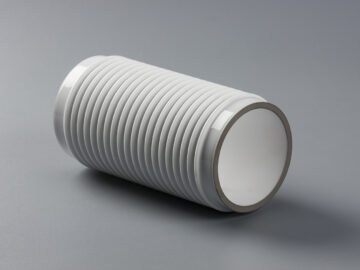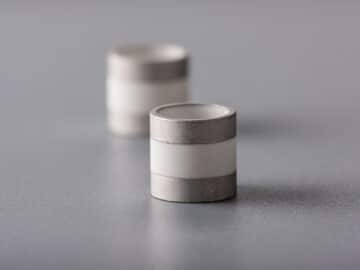Technical Specifications
| Tensile Strength, Kovar Cup Method | > 20,000 psi, avg. (138N/mm2) |
| Helium Leak Rate | < 10-9 cc/sec |
| Thermal Shock Resistance room temperature to 850C | will not burst or leak after five operations |
Ortech supplies custom Metalized Alumina Ceramics, These metallized ceramics are ideal for use within high vacuum, high voltage and high pressure applications.
We provide metallized ceramic for power grid tubes, vacuum interrupters, RF windows, metallized rings and components for insulators and sensors.
Alumina is one of the most commonly used engineering ceramic materials, offering high hardness and wear resistance with excellent electrical insulation properties. Ortech high-purity alumina 94-96% ceramics (Al2O3) are used as a ceramic base material. Other ceramic base materials can be use on request.
Common metalized alumina ceramics consist Molybdenum based paints followed by nickel plating. A coating of molybdenum and manganese particles mixed with glass additives and volatile carriers is applied to the ceramic surface to be brazed. The application of the coating may be hand-painted, sprayed, or robotically applied. After air drying, the coating is fired in a wet hydrogen environment at 1450°–1600°C leaving a “glassy” metallic coating 300–500 micro-inches (7.6–12.7 microns) thick, to ensure high bond strength between the metallized layer and the ceramic base.
The fired coating is subsequently plated with a 0.001–0.003 in. (25.4–76.2 microns) layer of nickel. The nickel plating is sinter-fired at 850°–950°C in a dry hydrogen atmosphere leaving a finished metallic surface that can be readily brazed using standard braze filler metals.


| Tensile Strength, Kovar Cup Method | > 20,000 psi, avg. (138N/mm2) |
| Helium Leak Rate | < 10-9 cc/sec |
| Thermal Shock Resistance room temperature to 850C | will not burst or leak after five operations |